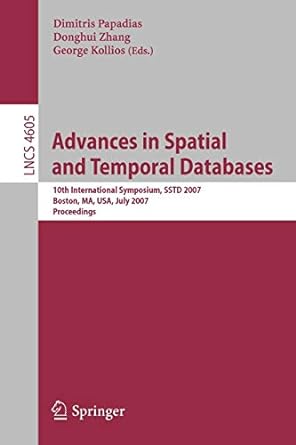Question
There are many parameters that could be used to describe disk performance; among them are: number of bits per track disk capacity (in bits) number
There are many parameters that could be used to describe disk performance; among them are:
| number of bits per track | disk capacity (in bits) | number of disk surfaces |
| rotational speed | rotational latency | transfer rate |
| tracks per surface | sectors per track | blocks per track |
| sectors per block | seek time | speed of disk arm |
| block-read time | number of blocks |
Some of these parameters are independent, and others are (approximately) linearly related. That is, doubling one doubles the other. Decide which of these parameters are linearly related. Then, select from the list below, the relationship that is true, to within a close approximation.
Note: none of the statements may be true exactly, but one will always be much closer to the truth than the other three. Also note: you should assume all dimensions and parameters of the disk are unchanged except for the ones mentioned.
| a) | If you double the number of tracks per surface, then you double the average seek time. |
| b) | If you double the number of sectors on a track, then you double the capacity of the disk. |
| c) | If you double the number of disk surfaces, then you double the capacity of the disk. |
| d) | If you double the number of sectors per block, then you halve the capacity of the disk. |
Step by Step Solution
There are 3 Steps involved in it
Step: 1

Get Instant Access to Expert-Tailored Solutions
See step-by-step solutions with expert insights and AI powered tools for academic success
Step: 2

Step: 3

Ace Your Homework with AI
Get the answers you need in no time with our AI-driven, step-by-step assistance
Get Started


